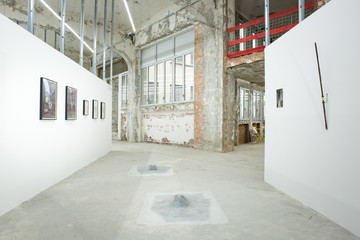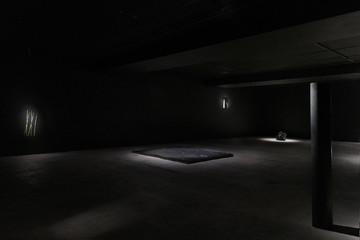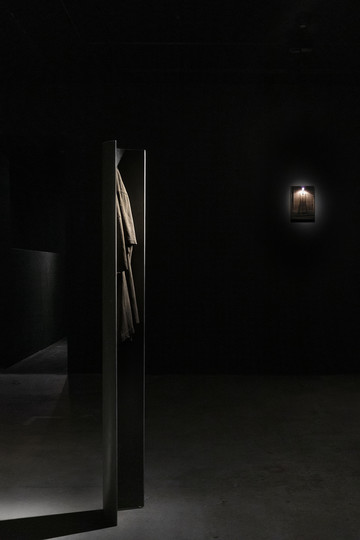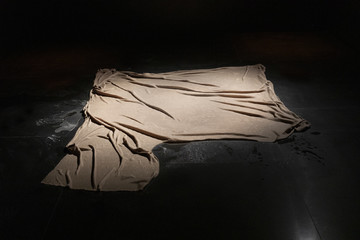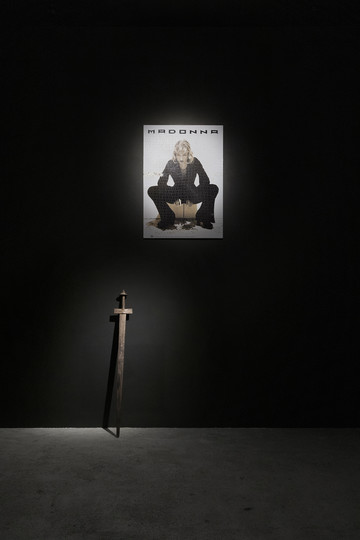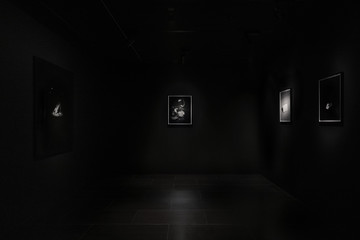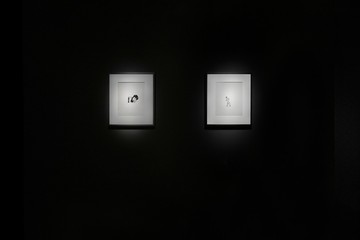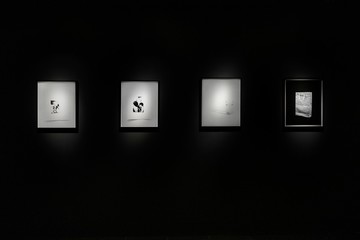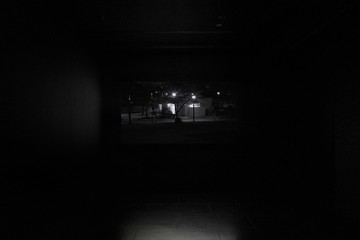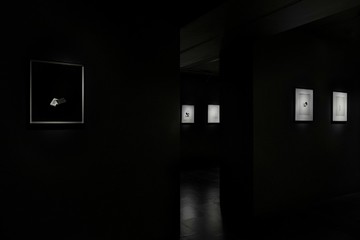Empty Gallery is pleased to present Vunkwan Tam and Taro Masushio
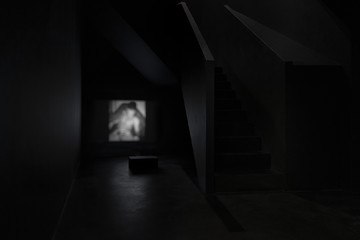
Vunkwan Tam’s artistic practice ranges across sculpture, video, text, sound, and installation. Often taking the form of marginally adjusted readymades—whether found objects, images, or textual fragments—Tam’s work expresses what might be termed a contemporary ethics of exhaustion, foregrounding the residues of circulation, labor, and the minimal human trace in place of the conventional performance of artistic personae. He received his Bachelors in Fine Art from the Chinese University of Hong Kong in 2020, and opened his debut solo exhibition F at Empty Gallery in 2023.
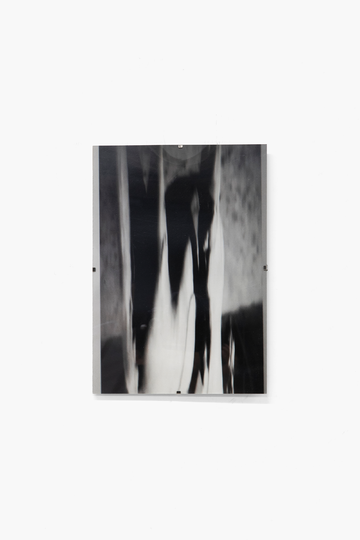
Digital print, acrylic frame
21 x 29.7 x 1 cm
8.26 x 11.69 x 0.40 in
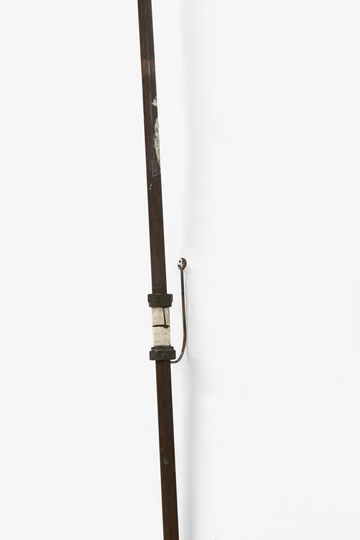
Copper pipe, metal hardware, PVC pipe
102 x 3 x 3 cm
40.15 x 1.18 x 1.18 in
In La Fortuna Fayenza, a black and white image of a warmblood horse is stretched and contorted, manipulated almost to the point of indiscernibility. Reflecting Tam’s usual deployment of marginally adjusted readymades, the still was sourced online from a personal recording of a dressage competition held in Sweden on September 14, 2008—the eve of the collapse of Lehman Brothers. One of a series of unrelated videos the artist had searched for based on that very date, Tam likened the experience to a perverse form of spectatorship, drawing retroactive associations between bourgeois recreation and societal collapse.
The abstraction and defamiliarisation of forms in Tam’s latest works mirror the mundane yet insidious modulation of organic bodies under somatic capitalism. Afterlife, 871M and Afterlife, 869M, 870M repurpose screen-worn zombie costumes from Resident Evil: Afterlife—a hit franchise where civilians exposed to a leaked mutagen are left to wander a post-apocalyptic earth. Two sets of dusty and dishevelled ensembles resembling workwear are arranged meticulously between sheets of polyethylene film, leaving the floor-bound sculptures with a certain crime-scene coldness. Devoid of any corporeality, all that remains in the Afterlife pieces are the material traces of an exhausted cultural organism, retained and repackaged to perform its subsequent function.
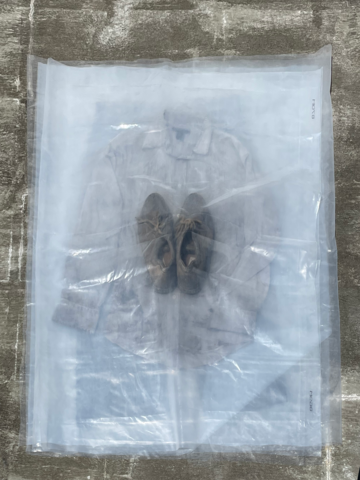
Zombie costume from Resident Evil: Afterlife, polyethylene film
130 x 100 x 10 cm
51.18 x 39.37 x 3.93 in
Unique
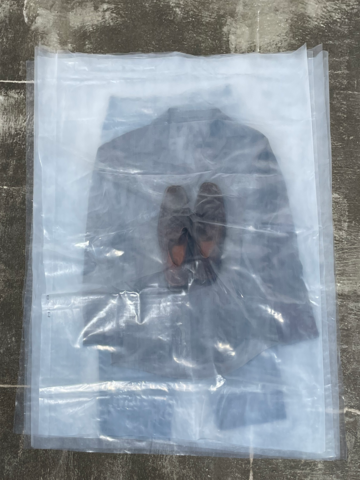
Zombie costume from Resident Evil: Afterlife, polyethylene film
130 x 100 x 10 cm
51.18 x 39.37 x 3.93 in
Unique
Taro Masushio is a Japanese artist based in New York. His conceptual practice positions photography as ontological proposition or speculative machine within a nexus which also includes prose, video, drawing, and sculpture. Masushio investigates the capacity of images, not to document an underlying reality, but to manipulate and endlessly extend our own perception– mobilizing the domains of time, space, and affect as plastic qualities to be sculpted in the pursuit of other possible worlds.
He received his BA from UC Berkeley and MFA from New York University, and has taught at both institutions. Masushio’s work has been exhibited and screened at Bonner Kunstverein, Berkeley Art Museum/Pacific Film Archive, Normal Screen, 47 Canal, Ulrik and Hordaland Kunstsenter, among other venues.

Silver gelatin type LE print
69.7 x 57.2 x 2.6 cm
27.5 x 22.5 x 1 in
Edition 2 of 3

Silver gelatin type LE print
69.2 x 56.6 x 2.6 cm
27.75 x 22.25 x 1 in
Edition 2 of 3
This work depicts an Asagao or morning glory. As suggested by their name, these flowers blossom during the day and seal their petals at sundown. Masushio deliberately photographs them in the darkness, conjuring a sense of active mystery that galvanizes the viewer to imagine the hidden interior life of these flowers. Asagao may serve as a metaphor for the multiple lives lived by single beings, often hidden within plain sight.
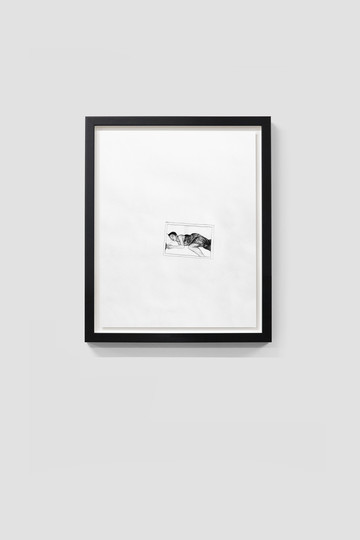
Silver gelatin type LE print
25.4 x 30.48 cm
10 x 12 in
Edition 1 of 3
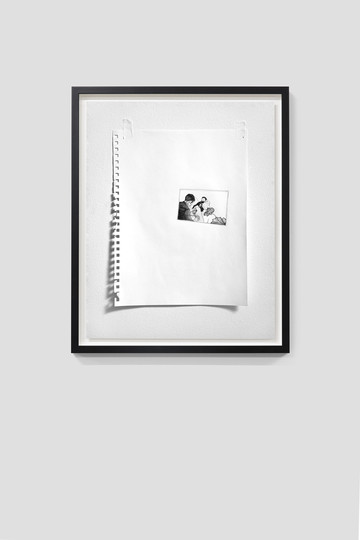
Silver gelatin type LE print
38.1 x 47.63 cm
15 x 18.75 in
Edition 1 of 3
In Untitled 30, Masushio laboriously renders a photorealistic copy of one of Junichi En’ya’s images in graphite before re-photographing it against his studio wall. The work joins a larger body of work first exhibited at Masushio’s solo exhibition Rumor Has It, centred around the historical enigma of Jun’ichi En’ya. Amongst many other things–a father, a husband, a photo-lab technician, and other roles which are doubtless unknown– En’ya was one of the earliest homoerotic photographers in Japan.
Concealing any traces of his corporeal hand, Masushio instead emphasises the countless layers of mediation between the reality once captured by En’ya, and the present-day viewer—articulating a distance that can only be bridged by an imaginative leap. By denying the viewer the illusion of unreserved access to either his own interiority or that of En’ya, Masushio enacts an aesthetics of withdrawal—one which, beyond being simply hermetic, implies a humanist sense of discretion and concern for privacy.
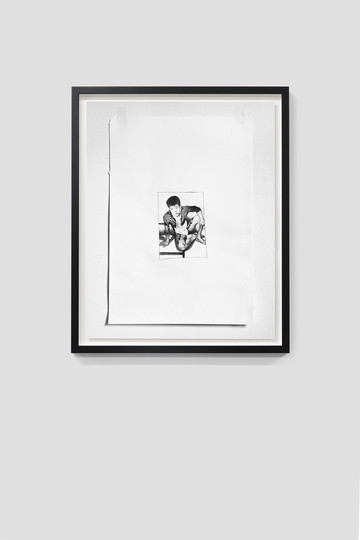
Silver gelatin type LE print
38.1 x 47.63 cm
15 x 18.75 in
Edition 1 of 3

